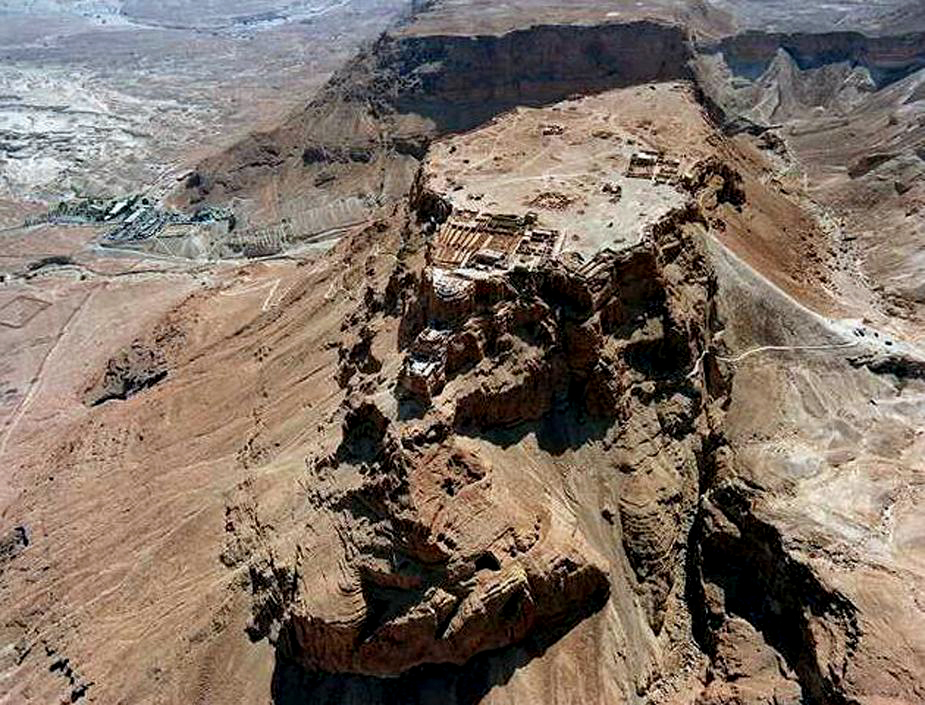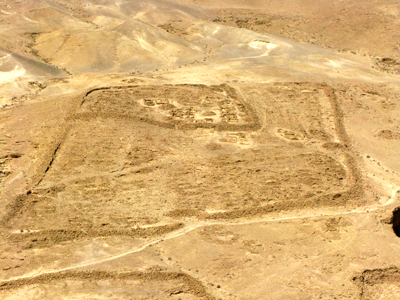
The last of the strongholds held by Jewish rebels to fall to the Romans during the First Jewish Revolt. Its name is the Roman form of Hebrew matsuda, "fortress." Though not directly related to any event reported in the Bible, Masada provides important insights into the context of Herod's rule and character.

Aerial view of Masada from the north.
The site was a rocky plateau in the Judean desert rising precipitously above the floor of the Dead Sea. First fortified by Alexander Jannaeus to protect the southern border of his territory, Herod the Great established a citadel on the plateau sometime between 37 and 31 BC; the buildings he built included a 4,000 m2 palace on the west, a fabulous terraced palace on the north, a swimming pool in the center, and store-rooms filled with supply enough to last months if not years of siege.
The most famous episode associated with the site is probably that of its siege by the Roman governor of Judea Flavius Silva during the First Jewish Revolt. The site had been seized by a small group of Zealots at the beginning of the revolt. Jewish refugees swelled their numbers when Jerusalem was sacked in 70 AD, and the fortress became the last refuge for the rebels. In the winter of 73-74 Silva began to lay siege to Masada, building rings of walls around the fortress. A huge ramp was then built on the lower 150m-high western slope to access the citadel. When the Roman soldiers finally breached the wall they found that the defenders—960 men, women and their families—had chosen instead to commit suicide rather than surrender; it was the Passover. Only two women and five children survived to tell the tale.

Remains of one of the Roman
army camps at Masada.
Click here to read more about the fall of Masada.

©ALBERITH